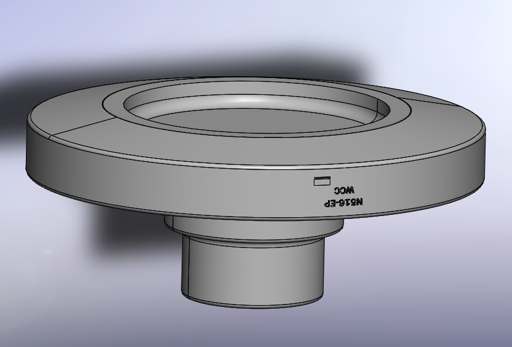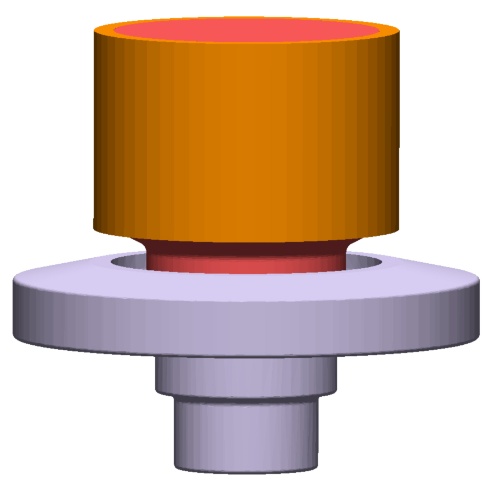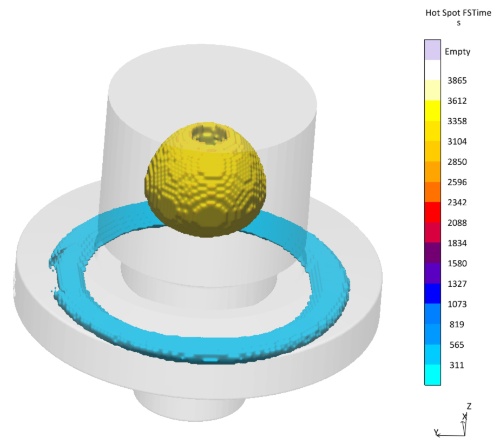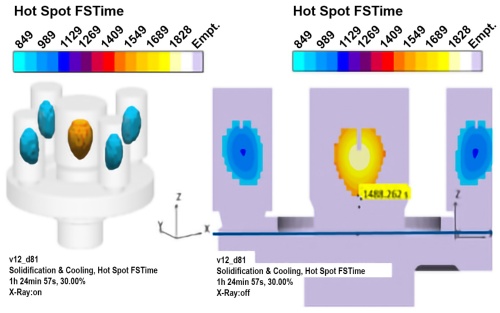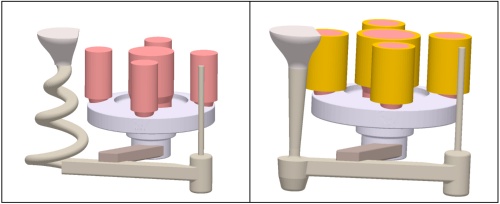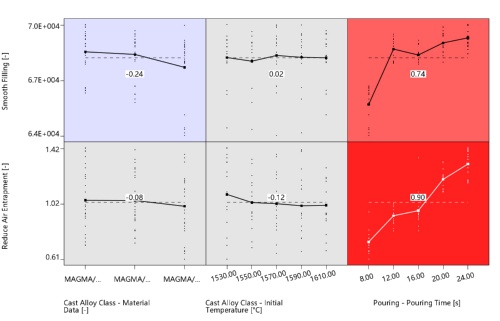Small Series, High Quality: Using the Right Casting Technology to Produce Small Batch Sizes Economically
Emerson Process Management (Tianjin) Valve Co., Ltd. designs valve covers for control valves that are used in most industries, from the chemical industry to power generation.
Emerson planned to produce a small series of a valve cover (Figure 1) made of an austenitic stainless steel, a martensitic steel, or a steel grade for high temperature and high-pressure applications. The objective was to design a standard gating and risering system that can be used to cast all three alloys with no loss of quality.
Today, the market demands smaller series. As a result, large series find fewer customers, as components are needed for growing niche applications. This causes problems for Emerson‘s designers. They were used to designing for large batches. Before starting production, the foundry usually tested the component extensively with prototypes. The engineers used casting process simulation only after the production had started in order to adjust the gating system, correct problems or reduce the pouring time.
The effort for this approach increases considerably in relation to the production volume of a small series. Tests and trials drive up overall costs. The developers have to adapt to these circumstances and start simulating while they are still designing the component, even before production starts. This allows them to identify and avoid casting defects, as well as to ensure a high level of quality during development. Thus, they design a suitable gating and risering system that guarantees a robust and defect-free production.
As a systematic approach, the foundrymen decided to use MAGMASOFT® to first layout the risers and then to design the gating system, considering the best pouring time.
Success With a New Risering?
A valve cover has already been produced from carbon steel in large quantities. The engineers used the casting system for this material as a reference to adapt the layout of the risers. For the large-scale production from carbon steel, the foundry used a single feeder located centrally in order to produce a defect-free casting with dimensional accuracy (Figure 2). Will this set-up also work with other alloys?
The experts simulated the solidification for each of the three alloys at different pouring temperatures. Thus, they considered real temperature fluctuations, which occur during production. The quality was evaluated using a virtual design of experiments (DoE).
The results showed that for castings made of austenitic stainless steel, no casting defects are expected. However, the component made for high-temperature applications required a constant pouring temperature to meet all quality requirements. A minimal decrease in temperature would lead to a substantial increase in scrap due to porosity. The martensitic steel casting showed significant casting defects at any pouring temperature. For this alloy, the foundrymen had to adjust the riser.
A detailed analysis with MAGMASOFT® explains what happens. During solidification, two feeding zones develop, identified by two hot spots (Figure 3): a circular area below the feeder gets isolated and the feeding from the riser is interrupted. This results in shrinkage porosity in that area. Were the engineers able to adapt the design without major effort?
Enlarging the size of the riser turned out to be uneconomical. It would have been much too large to avoid shrinkage porosity. The foundrymen aimed to feed the critical circular area in a targeted manner. Therefore, they reduced the size of the riser in the center of the part, installed four risers above of the critical area, and added four chills to the set-up.
Using this configuration, they subsequently simulated the solidification of the component and assessed the casting to find any defects. The casting could be produced from all three alloys without any problem - defect-free (Figure 4).
Achieve Your Goal Faster With the Right Gating System
After defining the risering with MAGMASOFT®, the engineers revised the gating system. They took into account a smooth and steady as well as a rapid mold filling. Two different downsprue geometries were available (Figure 5): a helical and a tapered one.
The engineers simulated the mold filling for the two gating systems and the three different alloys, with different pouring temperatures and times, and evaluated the results. The correlation matrix of the virtual DoE shows at a glance which process variables significantly affect the results: The darker the shade, the stronger the influence on the quality.
The analysis for the helical gating (Figure 6a) indicates that neither the steel grade nor the pouring temperature affect the filling behavior (in the figure in grey). The pouring velocity, on the other hand, substantially influences the quality (in the figure in red, or dark red): pouring times between 12-16 seconds lead to a smooth mold filling without air entrapment.
The virtual DoE of the tapered downsprue (Figure 6b) also shows that material and pouring temperatures do not affect the filling. With a tapered sprue, the mold is filled best within 8 seconds: Flow of the melt is smooth and steady enough to meet all quality requirements. Thus, the conical sprue became part of the new gating system.
Emerson manufactured the valve cover from the three alloys with the new risering and the optimized gating. The quality records of the suppliers showed that all valve covers of this type met the criteria for quality acceptance. Emerson achieved their expected goals: to design a standardized gating and risering system that enables the production of the valve cover for all three steel grades without loss of quality.
Find the Right Gating and Risering System Even Before It Is Needed
To secure high-quality castings, despite variations in production volume or material specifications, MAGMASOFT® is the perfect tool - already during casting design or process development. Virtual Design of Experiments enables the design of castings to match the production, considering many constraints and variables of the manufacturing process. In this example, the engineers successfully used one standardized gating and risering system to produce defect-free valve covers from different steel grades.
This allowed the engineers to design a process that works without prior sampling parts - perfect for small batches. In the future, Emerson‘s engineers will also plan larger series more intensively in advance with MAGMASOFT®, in order to save extensive trials and costly prototype parts. In this way, they can react efficiently to new market requirements, material demands and series quantities before the actual production starts. Emerson thus saves time and money and benefits from economical processes.
About Emerson
Emerson Electric Company is a conglomerate that operates internationally. The company is now one of the largest global producers of power technology, operating more than 200 plants worldwide. The Chinese subsidiary Emerson Process Management (Tianjin) Valve Co. Ltd. was opened in 2004. It includes sales, a training center and production facilities. In Tianjin, Emerson manufactures regulators, actuators and control valves for the leading brands Fisher and Yarway.
